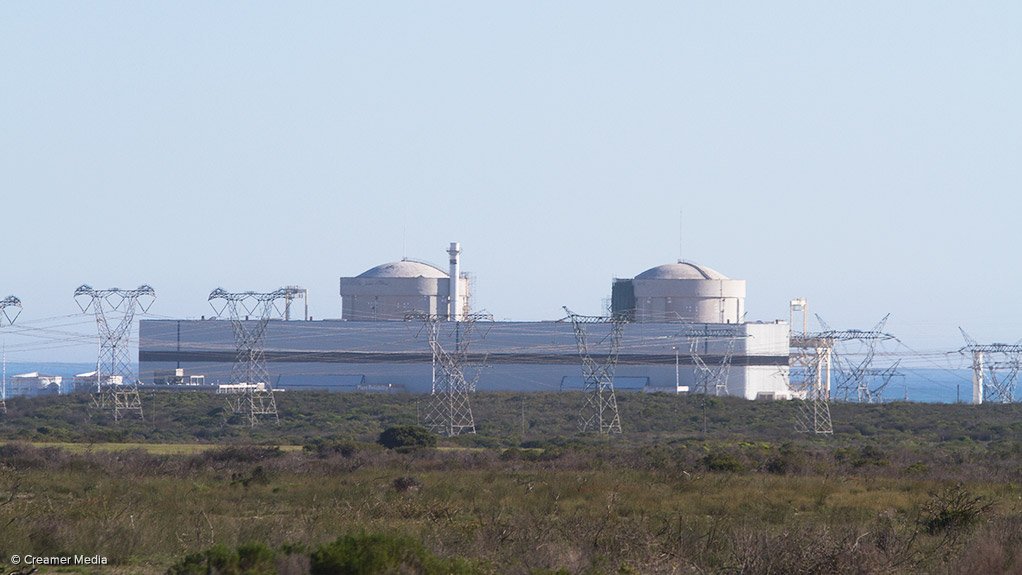Nuclear regulator assures that contamination incident at Koeberg did not involve reactors
The National Nuclear Regulator (NNR) on Monday assured that a reported incidence of airborne contamination at the Koeberg Nuclear Power Plant (NNP) did not come from the nuclear reactor. Koeberg, which is owned and operated by State-owned national electricity utility Eskom, has two reactors and is the country’s (and indeed Africa’s) only NPP. (The SAFARI-1 nuclear reactor at Pelindaba, west of Pretoria, is owned and operated by the South African Nuclear Energy Corporation and is a research reactor which does not generate any electricity.)
The contamination was detected during a routine test of the Koeberg Security Central Alarm Station’s ventilation system. (During such tests, which are conducted on a regular basis, Iodine-131, which is radioactive, is used in tiny amounts to represent the kind of contaminant that the ventilation system has to filter out, in the event of a nuclear accident at the NPP.)
“The NNR conducted its initial inspection of the occurrence and can confirm that the airborne contamination in the Koeberg Security Central Alarm Station did not come from the nuclear power plant,” reported NNR regulatory programme manager nuclear power plant Peter Bester. “The NNR inspection data indicated that there are currently no health and safety concerns to [the] public or workers as a result of this occurrence.”
His statement is based on the preliminary investigation results provided by the Authorisation Holder. The NNR is continuing its oversight activities at Koeberg, including following up on Eskom’s corrective actions to prevent future such occurrences.
The NNR was set up under Section 3 of the National Nuclear Regulator Act (Act no. 47 of 1999). Its core function is to ensure the safety and protection of people, the environment and property from nuclear damage, by establishing regulatory practices and safety standards appropriate for South Africa and through oversight of the country’s nuclear activities.
Article Enquiry
Email Article
Save Article
Feedback
To advertise email advertising@creamermedia.co.za or click here
Comments
Press Office
Announcements
What's On
Subscribe to improve your user experience...
Option 1 (equivalent of R125 a month):
Receive a weekly copy of Creamer Media's Engineering News & Mining Weekly magazine
(print copy for those in South Africa and e-magazine for those outside of South Africa)
Receive daily email newsletters
Access to full search results
Access archive of magazine back copies
Access to Projects in Progress
Access to ONE Research Report of your choice in PDF format
Option 2 (equivalent of R375 a month):
All benefits from Option 1
PLUS
Access to Creamer Media's Research Channel Africa for ALL Research Reports, in PDF format, on various industrial and mining sectors
including Electricity; Water; Energy Transition; Hydrogen; Roads, Rail and Ports; Coal; Gold; Platinum; Battery Metals; etc.
Already a subscriber?
Forgotten your password?
Receive weekly copy of Creamer Media's Engineering News & Mining Weekly magazine (print copy for those in South Africa and e-magazine for those outside of South Africa)
➕
Recieve daily email newsletters
➕
Access to full search results
➕
Access archive of magazine back copies
➕
Access to Projects in Progress
➕
Access to ONE Research Report of your choice in PDF format
RESEARCH CHANNEL AFRICA
R4500 (equivalent of R375 a month)
SUBSCRIBEAll benefits from Option 1
➕
Access to Creamer Media's Research Channel Africa for ALL Research Reports on various industrial and mining sectors, in PDF format, including on:
Electricity
➕
Water
➕
Energy Transition
➕
Hydrogen
➕
Roads, Rail and Ports
➕
Coal
➕
Gold
➕
Platinum
➕
Battery Metals
➕
etc.
Receive all benefits from Option 1 or Option 2 delivered to numerous people at your company
➕
Multiple User names and Passwords for simultaneous log-ins
➕
Intranet integration access to all in your organisation

















